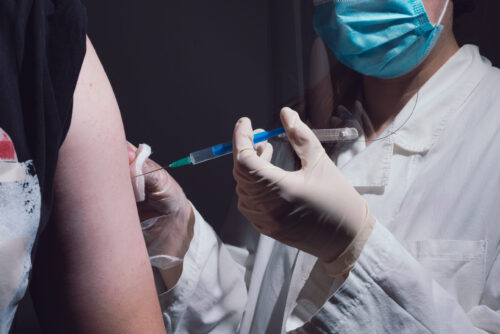First identified in 1970 in the Democratic Republic of the Congo, monkeypox is a disease endemic to the tropical rainforests of Central and West Africa. It became a disease of global public health concern and declared a public health emergency in the United States in 2022.
Viral transmission
Monkeypox is a zoonotic disease, with transmission possible between animals and humans. To date, most cases in this current outbreak have disproportionately affected gay men, bisexual men, and men having sex with men.
However, cases have also been reported in providers not equipped with proper PPE who have been caring for patients with a suspected monkeypox infection.
A member of the orthopoxvirus genus in the Poxviridae family, monkeypox is rarely fatal. Transmission occurs via direct and indirect contact (respiratory droplets and fomites) and contaminated food and water. It can also be vector-borne.
Vertical transmission in pregnancy causes congenital monkeypox in utero, placing patients at risk for spontaneous pregnancy loss, fetal demise, and preterm delivery.
Vectors and at-risk populations
Besides monkeys, other monkeypox hosts include Gambian pouched rats, hedgehogs, squirrels, anteaters, and dormice. Recent evidence suggests that humans can also transmit the virus to dogs. Notably, monkeypox can survive outside of a host for up to 15 days — an unusually long time for a virus.
It is important to consider the increased risk to those patients that may have sexual contact with people outside of the nuclear relationship, especially transmasculine persons (assigned females at birth identifying as male) who are pregnant, having sex with, or have partners who engage in sex with assigned males at birth.
Other at-risk populations include patients who are:
- Receiving chemotherapy, especially those diagnosed with leukemia or lymphoma
- Receiving alkylating agents
- On long-term corticosteroids
- Pregnant
- Chest-feeding
- Experiencing any dermatologic conditions causing denuding of the skin (psoriasis, eczema, atopic dermatitis)
Additionally, solid organ and stem cell transplant patients are considered high risk for contracting monkeypox.
Monkeypox and HIV
It is important to understand the impact that Monkeypox has on HIV-infected persons. HIV-positive patients with robust CD4 counts who are currently receiving antiretroviral therapy (ART) do not demonstrate an increased risk of contracting monkeypox.
However, anyone who has failed ART or are not virologically suppressed with ART may be at an increased risk for contracting monkeypox virus.
Clinical presentation
Clinical presentation includes a prodrome febrile syndrome that lasts 5-21 days, including malaise, chills, headache, and lymphadenopathy. A deep-seated vesicular or pustular rash is the hallmark occurring in over 98% of all patients infected with monkeypox. This rash starts centrally before spreading to the extremities and face.
Macules evolve into papules, then to vesicles, then pustules, before finally crusting. Patients are still considered contagious until all scabs fall off and there is evidence of new skin growth, which can take 7-14 days. It is important for patients to avoid picking at the lesions, as this may cause permanent scarring.
Approximately 40% of all cases involve the oral, genital, and perianal mucosa, resulting in dysphagia, tonsillitis, epiglottitis, proctitis, urethritis, and balanitis. Patients with perianal lesions may also experience some rectal bleeding and tenesmus. Conjunctivitis occurs in about 6% of all cases reported thus far.
Confirming a monkeypox diagnosis
Any patient with a high index of suspicion for monkeypox must meet specific guidelines for confirmation utilizing PCR testing of skin lesions. Due to its high sensitivity, this is considered the gold standard for testing.
Orthopoxviruses are serologically cross-reactive; therefore, antigen and antibody detection methods do not provide monkeypox-specific confirmation. Two vigorous swabs from 2-3 lesions on different parts of the body should result in a more accurate specimen. Transport should utilize a viral transport medium container.
It is not necessary to de-roof lesions prior to swabbing. Providers can simply swab the surface of the lesion. Contact your local or state DPH for specific instructions on obtaining specimens.
Treatment options
Currently, there are no FDA-approved treatments for monkeypox. There are two medications that are being used under Emergency Use Authorization (EUA) including:
- TPOXX (tecovirimat)
- VIGIV (Vaccinia immune globulin intravenous)
Both medications are available through the Strategic National Stockpile (SNS) for compassionate use.
Tecovirimat prevents the formation of the viral envelope by inhibiting p37, a highly conserved protein found in all orthopoxviruses. TPOXX should be taken with a full, fatty meal. If the capsule must be opened, it is important to thoroughly mix contents with 30ml of liquid (chestmilk, formula, or milk) or a soft food such as applesauce or yogurt for those who are unable to swallow capsules. If dose reduction is necessary, the patient must discard the remaining mixture as it is not stable after 30 minutes.
Adverse effects are rare with oral dosing. Pain at the infusion site occurs in approximately 73% of all cases of IV administration. There is little data on these treatments with pregnant or lactating patients, but no fetotoxicity has been found in animal studies to date. Tecovirimat was detected in trace amounts in chestmilk.
There have been no clinical studies performed on pediatric patients, so it is important to weigh the risk/benefit ratio when considering treatment in these special populations. Other treatments are supportive in nature, focused on minimizing secondary bacterial infections and preventing long-term sequelae.
Vaccines
There are two vaccines currently available. Jynneous (Imvanex), a live replication incompetent vaccinia virus, and ACAM2000, a live replication second-generation competent vaccinia virus.
Two-dose Jynneous is administered subcutaneously or intradermally four weeks apart. Single-dose ACAM2000 is administered via a bifurcated stainless-steel needle covered with vaccine solution. The virus grows at the vaccination site and produces a pruritic pock formation within 3-4 days. This scab falls off within a few weeks and antibodies then forms, demonstrating successful vaccination.
Containing the spread, educating patients
Fortunately, the monkeypox virus does not spread as easily as COVID-19, allowing outbreaks to be more easily contained.
Like any other public health concern, the data on Monkeypox changes quickly. Stay up to date with these changes through the CDC or the World Health Organization (WHO) websites.




